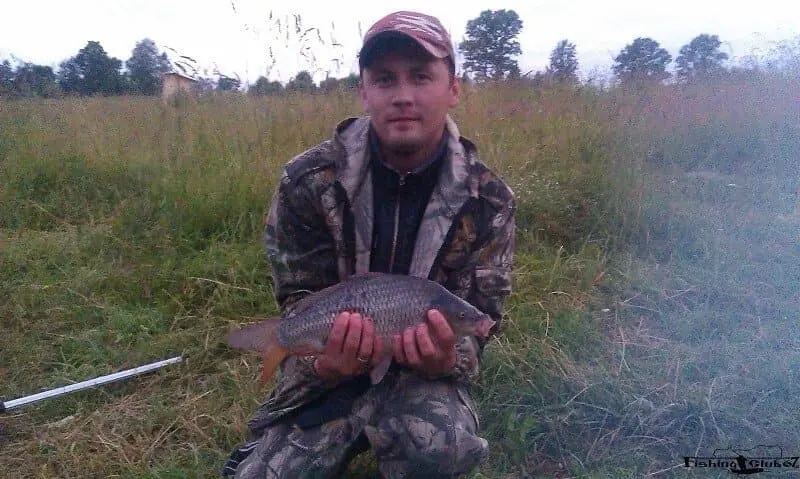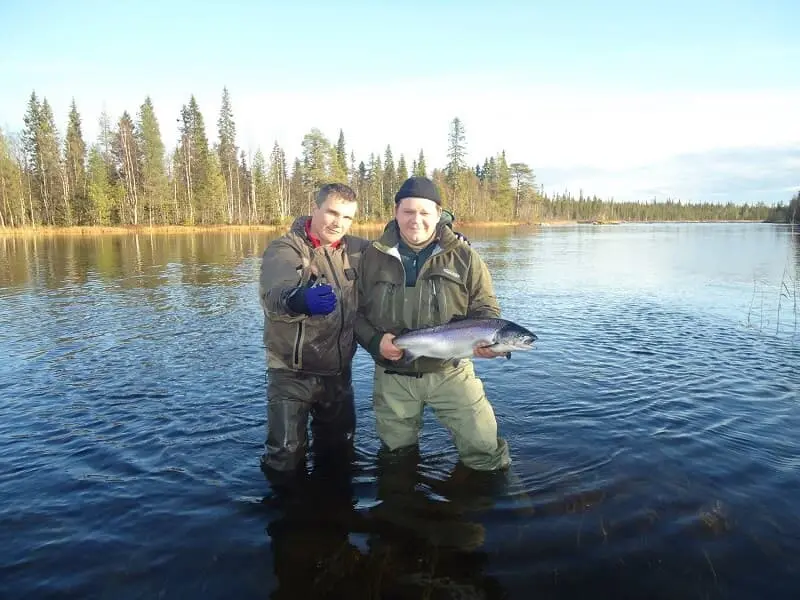Contents
The Smolensk region is located not far from Moscow, on the border of Russia and Belarus. There are many attractive reservoirs for fishermen, many rivers and lakes. Attracts good road communication and the availability of many even distant places.
Smolensk Region: bodies of water and territory
There are many rivers and lakes in the region. Most of the rivers flow into the Dnieper River, and only the Vazuza River with tributaries flows into the Volzhsky. The lakes are mostly stagnant and are replenished with water from precipitation. The rivers of the Smolensk region are partially regulated. There are three reservoirs – Yauzskoye, Vazuzskoye and Desogorskoye.
The Desnogorsk reservoir is a special reservoir. The fact is that it is part of the cooling cycle of nuclear reactors at the Smolensk NPP. The water temperature in it is increased all year round. As a result, even in cold winters, part of the reservoir does not freeze, and summer fishing can be practiced during the winter months. In the winter of 2017-18, winter feeder competitions were held here. Anglers came from all over the country and competed in the skill of feeder fishing, some got good catches. There is no need to worry about the ecological safety of this reservoir – control is at a high level, the reservoir is completely safe according to existing standards and is constantly monitored, which cannot be said about most rivers, lakes and ponds in the rest of Russia.
Here is the national natural park “Smolenskoye Poozerye”, which includes three large lakes with an adjacent territory, as well as large forests. On the territory of the park there are several rare biological species, it is among the objects under the supervision of UNESCO. The park regularly hosts various folklore festivals, exhibitions, and there are several open-air museums.
There is also Kasplya Lake and the Kasplya River, which flows into it. These places are partially regulated by dams and dikes, there are many spawning grounds and places in general that attract Smolensk people with fishing rods on a day off. This lake is famous not only for summer but also for winter fishing. Various ice fishing competitions are regularly held here.
The Dnieper flows across the region, its upper reaches are located here. The city of Smolensk stands on this river. The upper reaches of the river are small and calm. Many Smolensk residents fish directly from the embankment on spinning, and chub, pike and ide come across here. True, small in size. In the tributaries of the Dnieper, such as Vop, Khmost, there is room for fans of spinning and even fly fishing – and chub, and asp, and ide are waiting for their admirers here. You can get by car to almost any place on the Dnieper.

The Vazuza River is the only river with tributaries belonging to the Volga basin. It flows from south to north. At the confluence of the river Gzhat is the Vazuz reservoir. It attracts lovers of jigging for pike perch, as well as feederists who catch white fish. This place is remarkable in that it is closest to Moscow, and it is easy to get here from the capital by car. The capital’s fishermen, who are even more numerous than those from Smolensk, regularly come here on a day off, as well as to other reservoirs of the Gagarin region.
Fish protection and fishing regulations
Fishing rules in the region roughly coincide with those in Moscow: you can’t fish for spawning on donk and spinning, you can’t use watercraft at this time, you can’t catch valuable fish species below the established size. The spawning ban here lasts quite a long time: from April to June, and has no breaks, as, say, in the Pskov region. The terms of the ban are set each year individually.
Of course, all poaching methods of fishing are prohibited: illegal fishing with nets, electric fishing rods and other methods. Unfortunately, many reservoirs suffer from the raids of electric rods, especially not very large ones, where security officers are not so often there. These figures take a couple of large fish out of the reservoir, destroying all living things in it, and deserve the most severe punishment.
There are also frequent cases of setting illegal nets for spawning. Local residents, due to high unemployment, trade in this way to get food, catching fish for sale and for themselves. The main prey of poachers are bream and pike, which suffer the most from illegal fishing.
Certain steps are being taken by the leadership of the region to raise the fish stock. There is a program for settling silver carp and grass carp in the lakes of the region. These fish will have to eat aquatic vegetation, the luxuriant growth of which affects most stagnant water bodies. There was a program to revive the livestock of the Dnieper sterlet and salmon, but due to interstate difficulties, it has now been stopped.
Paid fishing and fishing bases
Some bodies of water, such as Lake Chapley, are the subject of debate for anglers. Indeed, amateur fishing should be a free activity in Russia. However, on the aforementioned lake there are facts of charging money for fishing. The rate is, however, small. However, it is not known for certain who and where the money is collected – there are no seals or signatures on the coupon, and the lake itself is not a private property. Apparently, the Smolensk local authorities decided to engage in tyranny. Taking money like this is illegal, but for the payment you can get at least peace of mind on the shore. Going on a fishing trip in the region, you need to inquire in advance about its “charge” on this reservoir, and it is better not to do it alone.
In the region there are normal really paid reservoirs, which are private property. Unfortunately, they are not very popular.
There are apparently two reasons for this – either a very large abundance of fish in free reservoirs, which is unlikely, or the local mentality. The last one is the most correct. There are practically no payers with payment for the fish caught. All fishing is carried out with payment for time, and very small – within 2000 rubles per day of fishing, and more often no more than 500 rubles.

Of the good payers, it is worth noting Fomino. There is an abundance of paid bridges from which you can catch crucian well. On weekends, these footbridges get busy quite quickly, so you need to either book seats in advance or arrive early in the morning. Of the trophies here, crucian carp is the standard. Unfortunately, something sane in terms of Moscow or St. Petersburg trout payers cannot be found here. Well, tourists have to compensate for the paid catch with a paid female company, which is plentiful and inexpensive here.
Conclusion
In my personal opinion, it doesn’t make much sense to go specifically for fishing to Smolensk. From reservoirs, you can go to Desnogorsk for exotic things and fish there, for example, in Shmakovo. Summer fishing in winter attracts many feeders, and pike and pike perch are taken with a bang. There are many reservoirs both for Moscow lovers and for others, which are less fished by lovers of profit and are able to bring more pleasure, and are located closer.









